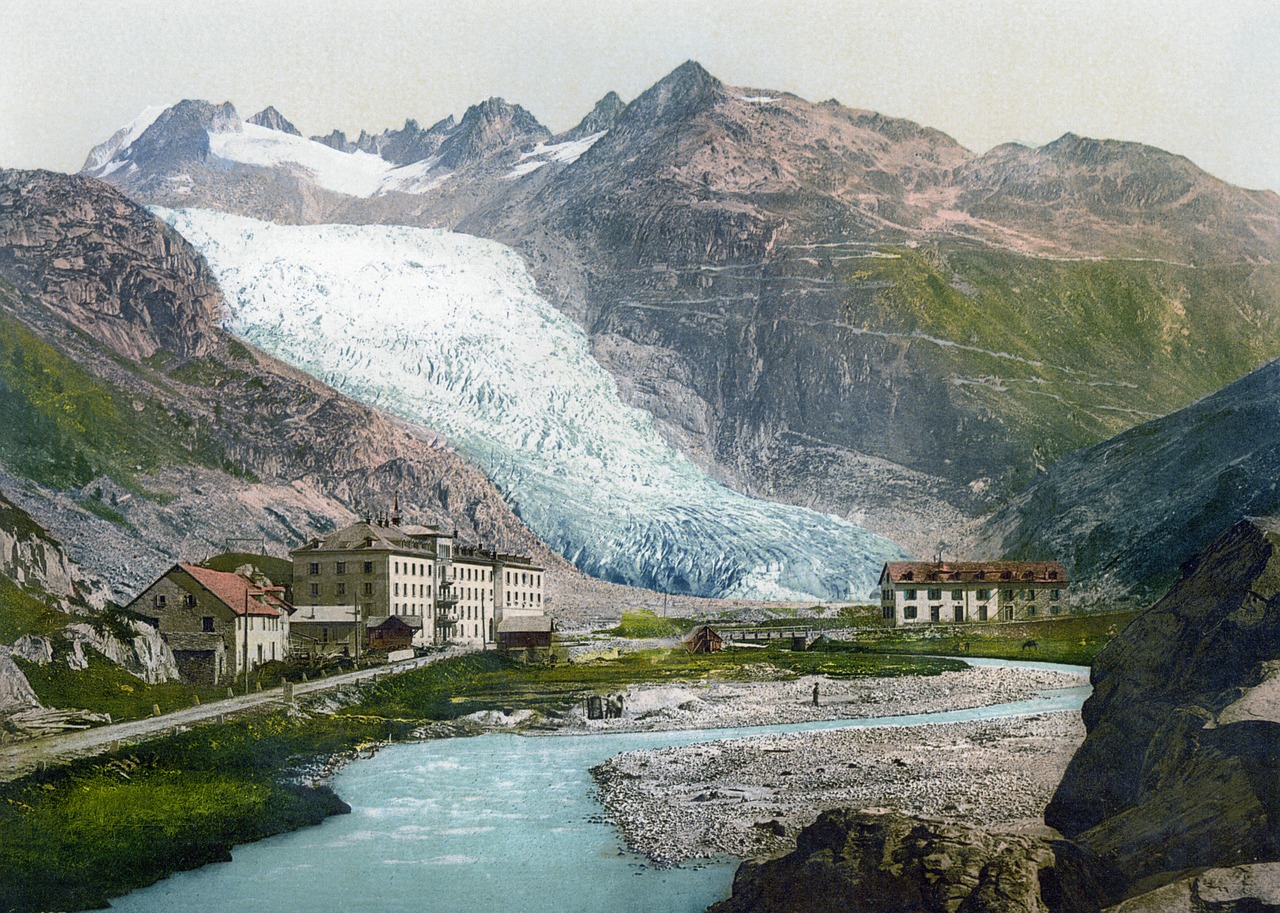
According to a new report by UNESCO, one-third of the world’s famous glaciers are expected to vanish in the next century. This is the result of increased carbon emissions. This is causing glaciers to recede at an accelerated rate. This can have disastrous consequences for human populations and biodiversity. For instance, the largest glacier in the Italian Alps collapsed in July. Meanwhile, all glaciers in the Dolomites are expected to disappear by 2050, and Mont Perdu in the Pyrenees is expected to disappear in less than 30 years.
The UNESCO study found that almost a third of the world’s glaciers are at risk, even if the global warming limit is set at 1.5 degrees Celsius. As of this writing, almost one-third of the glaciers on the World Heritage list are already disappearing, making this an important challenge for COP27 delegates..
A UNESCO report suggests that one-third of the world’s famous glaciers will disappear by 2050. But there is hope for the remaining two-thirds. With a quick and drastic reduction in CO2 emissions, glaciers could still survive in the next few decades.
Currently, the loss of ice in the world’s glaciers is estimated at around 58 billion tons a year, which contributes to 5% of the global sea level rise. In addition, ice loss in Yosemite National Park alone has increased by six to seven percent in the last decade.
According to UNESCO’s report, glaciers in 50 UNESCO World Heritage sites are at risk of disappearing by the year 2050. This is an alarming figure as scientists have warned that global warming will be severe by 2050. The report also estimates that if emissions continue at the current rate, more than half of the world’s glaciers will be gone by 2100.
Locations
The locations of the world’s famous glaciers vary. Some are located in Antarctica, while others are in the Alps. Generally speaking, the longest glaciers lie between 60 degrees north and south latitude. However, some definitions expand this list. Here’s a brief rundown of famous glaciers and their locations.
The largest glaciers are tens of thousands of square kilometers in area, covering an area the size of several small countries. In comparison, the smallest glaciers cover a fraction of this area. The world’s largest glacier complexes are located in the Antarctica, Arctic, and Patagonia.
Some of the most popular glaciers are in North America, such as the Columbia Glacier. But even if you don’t travel to these regions, you can still enjoy their beauty. In Alaska, the Exit Glacier is among the most accessible. It is located near Seward. Visitors to the park regularly report seeing wildlife. They can also enjoy the surrounding forests, lakes, and massive mountains.
The melting of glaciers is a major problem. According to a recent report, a third of the World Heritage glaciers will disappear by 2050. The only hope for saving the remaining two-thirds of the glaciers is to keep the temperature rise under 1.5 degrees Celsius.
Size of glaciers
There are three major regions of the world that are covered with glaciers. These are the Antarctic and Subantarctic, and the Arctic Canada North. The Antarctic ice sheets cover an area of 12.3 x 106 kilometers. The Southern Patagonian Ice Field is the largest outside of the polar regions.
The size of a glacier depends on its climate and its underlying topography. Glaciers are largest in polar regions, where climate conditions are cooler and topography is flat. The polar regions also have high annual precipitation, a key factor that helps the glaciers flourish.
In this map, the sizes of world’s famous glaciers are shown as blue areas. Blue areas show glacier height increases, which can be as much as 30 meters per year. The most dramatic change is seen in the front of the glacier, where sea ice and open water were replaced by towering glacial ice. However, the change in size is slowing and the thickness of the ice is remaining relatively unchanged.
The topography of many high mountain ranges is steep, which limits the size of glaciers and the size of complexes. The highest mountains in the world have some of the largest and most enduring mountain glaciers. However, they are difficult to measure, largely because the mountains are constantly shifting. In addition to providing a unique geography, they are also challenging for hikers, mountaineers, and adventurous explorers.
Did you know, the world’s most famous glacier size is very small compared to their overall area. The total glacier area is about seven hundred eight hundred thousand square kilometers. This is small compared to the thermal expansion of the ocean.
Crevasses- Deep crack on glacier
Crevasses form as a result of the movement of ice and can vary in width and depth. Some can be a few millimeters wide, while others can stretch hundreds of meters. Scientists use crevasses to study glacier flow, shape, and response to climate change. Unfortunately, crevasses are also a safety hazard for researchers.
Crevasses often form at the lateral margins of glaciers, the head of the glacier, and steep sections of the glacier’s surface. They form in response to changes in longitudinal stress, especially when ice particles are compressed. When ice particles are compressed, the force of gravity causes them to expand, causing large crevasses to form.
A glacier’s crevasses are also a sign of rapid ice flow. The glacier Taschachferner below the Wildspitze in Tyrolia, Austria, has large, open crevasses. You can see one such crevasse in the spot-shaped area near the middle of the image. Ski mountaineers in the area carefully avoided this dangerous section.
Crevasses in glaciers occur as a result of stresses associated with the flow of glacial ice. As ice flows over the surface, it slips over the base, causing fractures and crevasses. During a glacial surge, ice can accelerate its speed from a few millimeters per day to several meters per year. During these surges, a glacier may deposit huge amounts of material, called till.
Crevasses can also form due to melting. Meltwater flowing over ice may find a channel and continue its flow into a crevasse. During this process, it may deposit mounds of till, known as kames.
Impact on environment
The melting of world’s famous glaciers is having an impact on the environment. Global warming has accelerated the melting of glaciers, which release stored persistent organic pollutants (POPs) into water bodies. This decreases the quality of water downstream. The melting of glaciers in the Tien Shan region of China has already had a negative impact on water sources in the region.
Glaciers play an important role in regulating water levels and the hydrologic cycle. Glaciers provide water to downstream communities, which rely on these glaciers for their food and drinking supplies. In regions where glaciers melt, they also impact subsistence agriculture, as well as agro-pastoral systems.
The melting of glaciers also affects the hydrological system in the surrounding regions. Changes in hydrology can have a dramatic impact on agricultural production. In areas where glaciers are the main source of water, this can lead to serious water and food shortages. Similarly, the melting of glaciers can affect fisheries, since it can alter the flow of rivers and create a number of problems.
Scientists estimate that most glaciers in the world are receding. The first two decades of the 21st Century have seen glaciers in the world’s world heritage list recede at rates that were previously unthinkable. Some have even disappeared completely. The melting of glaciers contributes to about five percent of sea-level rise globally. It is essential to address the melting of glaciers and preserve their health in the coming years.
Melting glaciers can also affect species in the ocean. Certain birds rely on fish that live in melting glaciers. Rising water temperatures and levels will negatively affect aquatic plants and fish populations. Coral reefs will also be negatively affected if sea levels are not stabilized.

